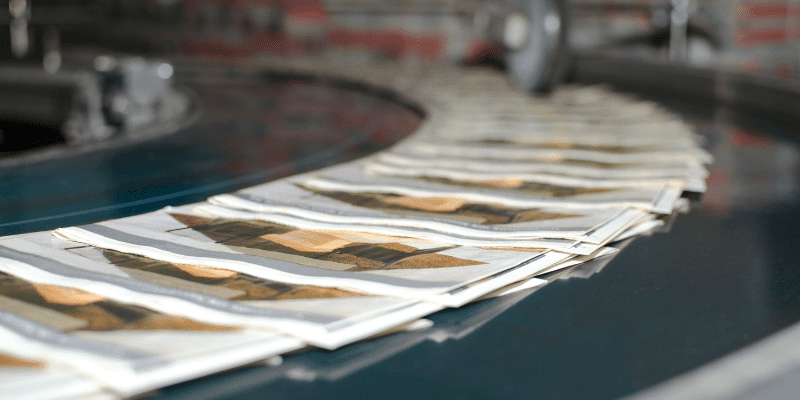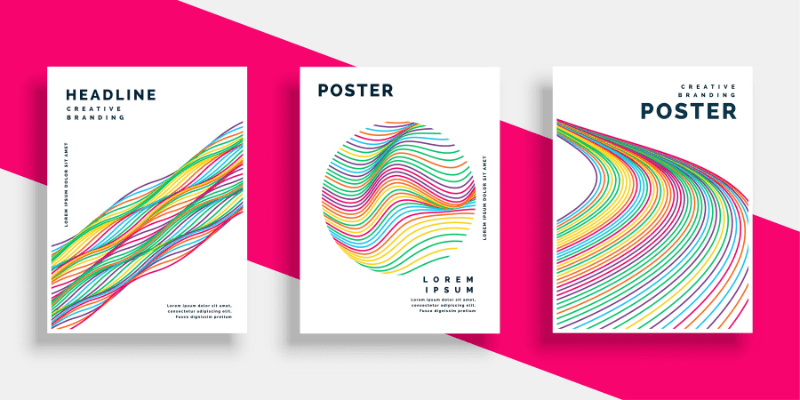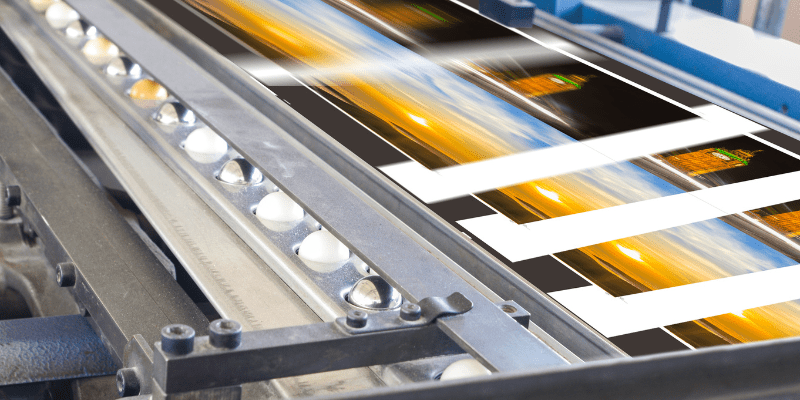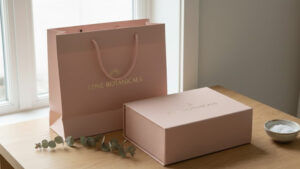Last Updated on January 9, 2023 by Packoi Team
Each book that you print is unique and comes with specific challenges. This is why you must clear up all concerns and issues with the printing company before you proceed with the book print run.
In this article, you’ll learn more about what it takes to print books and the different concerns that you have to discuss with the printer.
7 Concerns to Discuss with the Book Printing Company
Every book that you print comes with a unique purpose. This is why you can’t expect that every print run will be the same as the last one.
That means you have to be meticulous when before you have your book printed. You have to go through the same checklist every time you want to print something new.
Why? Because one mistake can cost you a lot. One typo error in the book will speak volumes about the quality of the book.
This is why it’s important to avoid printing problems by being thorough with your checklist. Here are the 7 concerns that you have to go through one by one with the book printing company.
What is the Width and Height of the Book?
These are the dimensions of the book. You have to decide on what the finished form would be. How high will it be and how wide?
It’s important to ensure that the measurement of the height and the width are distinguished from each other. You don’t want the printer to mix it up by mistake.
To ensure that there’s no miscommunication, provide the width measurement first and then the height. The standard measurement usually goes 8.5” W x 11” H (portrait) or 11” W x 8.5” H (landscape).
While you have the freedom to print your book in any size, it may cost you extra. Most printers have standard sizes. If you choose these, they can use their paper stock. That can help you save money because they’ll be giving you the bulk price for the paper.
Not only that, they don’t have to calibrate their existing equipment. That’ll surely go in your favor when you’re trying to negotiate the printing cost.

How Many Books Will You Print?
It’s ideal to already have a quantity in mind before you talk to the printer. But you can also ask them about their minimum order quantities. If your intended quantity is near their minimum, you might be able to negotiate a better price for printing your book.
In case they don’t have an MOQ, that’s okay. Ask them for multiple quotes based on quantity. That way, you can decide how many you will print in one run.
The quantity is also important because the book printer will determine the type of printing press that’ll help you save on costs.
Like if you’re only printing a couple of hundred copies, it’s more economical to use a digital printing press. But for larger quantities, it’s better to use an offset printing press.
Another consideration when you’re thinking about the quantity is the number of books previously sold. If the first batch of books ran out quickly, that means the demand is high. You should print more than the quantity of the first run.
Of course, if this is your first print of the book, you don’t have a history on to base the quantity. You might be safer using a conservative estimate for your quantity.
What is the Book’s Page Count?
The book printer would also want to know how many pages the book will be. This will not only be part of the cost, but it’ll also help you decide on what type of binding to use – which will be discussed later on.
The thing is, the page count should be discussed carefully. It’s sometimes the most misunderstood part of the conversation.
Make sure that you’re clear with the pages that you’re counting.
Sometimes, the printer would count pages that you didn’t think should be counted. For instance, one sheet is 2 pages for the printing company. Even if one side is blank, it’s still counted as another page. But for you, one sheet of paper counts as 1 page.
So make sure when you discuss the final page count, it’s clear that you’re referring to the same number. It’s probably best to put the number of pages and the equivalent sheets so it’s clear. Like you have 200 pages or 100 sheets. That way, you’re clear on both counts.
And don’t forget the cover. Be clear if it should be counted as part of the overall pages or not.
What Type of Paper Will You Use?
The printer will ask you to define the specific paper that you want to use for your book. What is the texture that you want?
You can choose to have a coated or uncoated type of paper. This will depend on how you want your book to appear.
If your book will have a lot of images and is intended for high-end readers, you’re better off using coated papers so it has a glossier finish. This is thicker and more premium-looking. You might want to consider the glossiness level of the paper. Make sure it’s not too shiny. You can request that from the printer.
But if your book is a simple novel or even a historical book, then you want to use uncoated papers. This looks more basic and is more economical compared to coated paper. You can choose the color of the paper to either be white or off-white (cream).
Take note that this is for the interior pages. The paper for the cover will be a lot thicker so it can protect the inner pages of the book.
What is the Paper Thickness?
After the type of paper, you also want to consider the thickness of the paper that you’ll use. Again, this will depend on the type of printed books you want as the final product. The thicker the paper, the more premium it is.
But that also means the book will be thick as well. So if you only have a few pages, like no more than a hundred pages or 50 sheets, then the thicker paper would be okay.
But if your book will have a page count that’s more than a hundred, then you’ll be forced to have it printed on thinner paper.
The thickness of the paper should also take into consideration how you’ll be shipping books. If you want to have it delivered by mail, then make sure it’s not unnecessarily bulky. That way, the shipping costs won’t make the book too expensive for your readers.
How Will You Bind the Pages?

The binding method is an important part of your conversation with the printing services provider. You want it to be clear – especially when you have no idea what the binding options are. This will affect the overall look of your book.
It’s important to know that there’s a specific binding option that’s ideal for specific books.
For instance, the Perfect Binding is the process of binding the interior pages and book cover at the spine by using a thermal glue that’s both strong and flexible. The rest of the book’s sides are then trimmed so it looks like a perfect bound. Since glue can bind a lot of paper sheets together, this binding method is ideal for books with a lot of pages.
Another binding option is called Saddle-Stitch Binding. In this method, the pages are grouped into sections and folded together. Then, wire staples are used to join them at the spine. Because of the way the pages are cinched together, this is ideal for books with a lower page count.
The Perfect Bound and Saddle-Stitch are the two most popular ways to bind book pages. However, there are still other options that you can choose from.
One is the Spiral Coil Binding method where a plastic coil is used to bind pages and book covers together. Small holes are punched along the edge of the spine where the coil is inserted.
The Wire-O Binding is the same as the spiral coil but it uses individual wire loops that form a circle once it’s closed.
Talk to the printing company to check what type of binding method they can do. That way, you can choose the right one to achieve the look that you want for your book.
What are Your Ink Preferences?
The first concern when it comes to the ink is color preferences. Will you print everything in full color? Or will it only be the book cover that’s colored while the interior pages are printed in black ink?
Another consideration is whether you’ll be printing on just one side of the paper or both sides. If you want pages printed on both sides, you might have to use a thicker sheet of paper. That way, any heavy ink won’t bleed through to the other side of the page.
You also have to discuss with the printer if you’ll print until the edge of the paper. This is called Bleed. An ink bleed is usually more expensive. The printer will have to print your book on a bigger piece of paper so they have space to trim the edges to give your book a smoother edge.
Types of Book Printing Options
Your printing services provider will also ask you about how the book will be printed.
There are 2 options when it comes to commercial printers.
Offset Printing
When you choose offset printing, the process involves the photographic transfer of whole pages of text and images into printing plates. These plates are thin and oftentimes flexible.
There’s a more technological way of doing it wherein the pages are lasered on the plates from a computer file. This is called CTP or computer-to-plate. For full-color printing, every page has 4 separate plates for each of the primary colors (CMYK).
Since the plates are flexible, you can wrap them around a revolving cylinder where ink is applied as it moves. The plate presses onto the rubber cylinder that in turn, applies the ink onto the sheet of paper or roll of paper.
Digital Printing
The other type of printing is digital or print-on-demand. Think of this as a bigger version of an office printer. A roll of paper is fed into the laser printer at a high speed.
The printer will use either fine powder or ink to take the image of the original page. After printing, the paper is automatically cut so it emerges as a double-sided page.
This option is ideal if you only need a small number of books printed. It’s also a great option for print-on-demand book projects. It’s more costly per piece. But you get to save on set-up costs that are usually charged when you use an offset printing press. If you only have a small number of books for printing, it’ll increase your cost per book.
Tips When Choosing a Book Printer

Partnering with the right printing services is a must if you want your book to be printed the right way. Many companies are offering this service. So you need to be very particular about what you want to achieve for your project.
Here are tips that’ll help you find the right printer.
Ask for Details about Their Printing Services
It’s easy to find a company that can print books for you. But is it the right type of printing? Do they have the type of binding method that you prefer?
Make sure you’re asking the right questions to get the specific details of their printing services. You don’t want to have to change printers just because they ended up not having the right equipment needed to produce your books.
You should also check which tasks in the printing process are outsourced. Sometimes, there are book printing companies that don’t do binding or finishing tasks. Make sure you’re aware of these details.
Consider Book Printing Options Overseas
When you’re looking for a printing company, don’t limit yourself to local printers. There are a lot of printers overseas, specifically in Asia, that have everything done in-house.
That means you don’t have to worry about them outsourcing any part of the printing process. They can do everything in-house – from printing to binding and finishing.
As you’re searching for a book printer, make sure that you talk to multiple companies so you can compare their prices and the services they offer. You want to ensure that you’re getting the best value for what you’re paying them to do.
Being thorough about this will keep you from having to deal with the printer’s error. It’ll keep you from unnecessary costs that’ll compromise the overall look of your book.
How to Keep Your Book from Printing Disasters
Printing problems can happen to anyone. But there’s a way to avoid these by understanding the complete print run lifecycle of your book. Let’s go through them one by one.
Request for Quotation
When you’ve chosen a potential book printing company, you’re going to ask them for a quotation.
To get a fair quote, make sure you provide the complete details. Provide the book title, the number of quantities to be printed, the number of pages (including the blank ones), the size (after trimming), book cover and binding preferences, and the type of paper (coated or uncoated).
Apart from that, you should also specify how many proofs you’ll require. Do you need a printed one or will a digital proof suffice? If you want to get advanced copies from the production line – that’ll also affect the quotation they’ll give you.
Negotiate the Quoted Price
When the printer provides their quoted price, you have to negotiate it. In most cases, they’ll give you enough room for negotiation.
But before you look at the price, make sure to check the details you provided. Have the printer include the list of details to ensure that they’re quoting you based on your preferences.
This will avoid miscommunication. It’ll protect you both when it’s time to pay off the printing services provided.
Print Order
Once everything is in agreement, the publisher will send a written order that’ll signal to the printer that they can start printing. This is called the print order.
When the printer gets this document, production for the book can start. The print order should contain the number of copies to be printed and how they’ll be delivered. It should also include a clear schedule and delivery instructions. That way, you’ll know when to expect copies of the book to arrive – and the printer knows how to send it to you.
Confirm the Print Order

Sometimes, before the printer proceeds with the production of the books, they’ll do another round of confirmations. They’ll use the information in the print order to check anything that you or the publisher missed out.
If there’s anything amiss, they’ll postpone the production and check back with you first. When everything is okay, this will lead to order confirmation. It means everything stated in the print order document is going to be followed.
It may feel like you’re wasting a lot of time, but you’re not. This is necessary to ensure that the printer won’t make a mistake with your book order.
Create the Proof
If this is the first time that a book is going to be printed, the printer will create proof that you have to check.
This proof is the physical form of what will be printed for the book. It’ll give you a chance to inspect everything to ensure that there are no errors.
If you see something, make sure you correct it and take note of it.
This proof is also important as a point of comparison when you get the final copy of the book. If it doesn’t look like the proof, then it’s usually the fault of the printer. But if it looks like the proof but you still don’t like how it looks, that’s on you.
Make sure you check with the printer about the type of proof that you want to receive. Some only provide digital proof. Others send physical proof. Discuss this so you’ll know what to expect.
Check the Proof
When you’ve checked the proof, there are only 3 messages that you can send about it.
The first is “OK to print as it is.” If you like the proof and you don’t have any issues with it at all, then this is the message you should send.
The second is “OK to print but take note of the corrections made.” This is when the proof has minor corrections. It usually means you trust the printer to make the changes as you instructed, then produce the book.
The third is “Corrections made and in need of new proof.” This means there are too many corrections that you have to see a new proof that implements all these.
Don’t try to complicate the messages that you’ll put in the proof that way, the printer won’t get confused.
Final Revisions
In case there are final revisions even after the proof has been approved and submitted – that’ll be a cost that you or the publisher will shoulder.
This is why proofing is incredibly important and shouldn’t be rushed. You want to make sure that the book will come out the way you want it to. If something’s not right, don’t make health-hearted approvals.
Get the Final Invoice
Once the books are produced, the printer will give the final invoice before shipping out the books they printed. Everything from the quotation to the print order, confirmation, and proofs will have to be checked to ensure that the book is produced as discussed.
Remember, while you and the publisher are the clients, you want to stay in the good graces of the printer. That way, you can build a lasting relationship with them.
Do You Want to Discuss Your Book Printing Concerns? Packoi Printing is Just Here to Help
Do you have questions when it comes to printing books? Make sure you are thorough when you’re discussing things with the printing company. Leave no questions unanswered. If you’re confused about anything, ask.
Don’t proceed with a project just because you’re pressured to meet a schedule. It’s not worth meeting a deadline if it means skipping through the proofing and editing process.
If you’re looking for someone to answer all your concerns about book printing, get in touch with Packoi Printing. We’ll be happy to ease your concerns about printing books.
Send us the details of your book project and we’ll give you a fair quotation as soon as possible.




